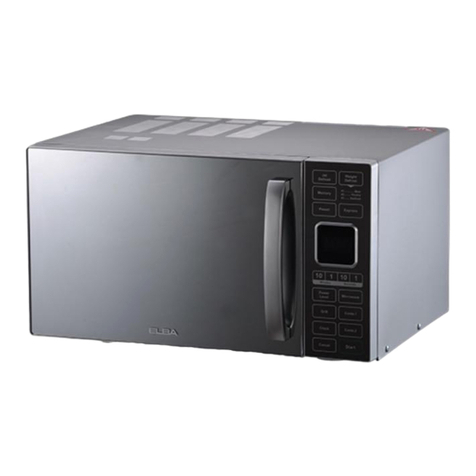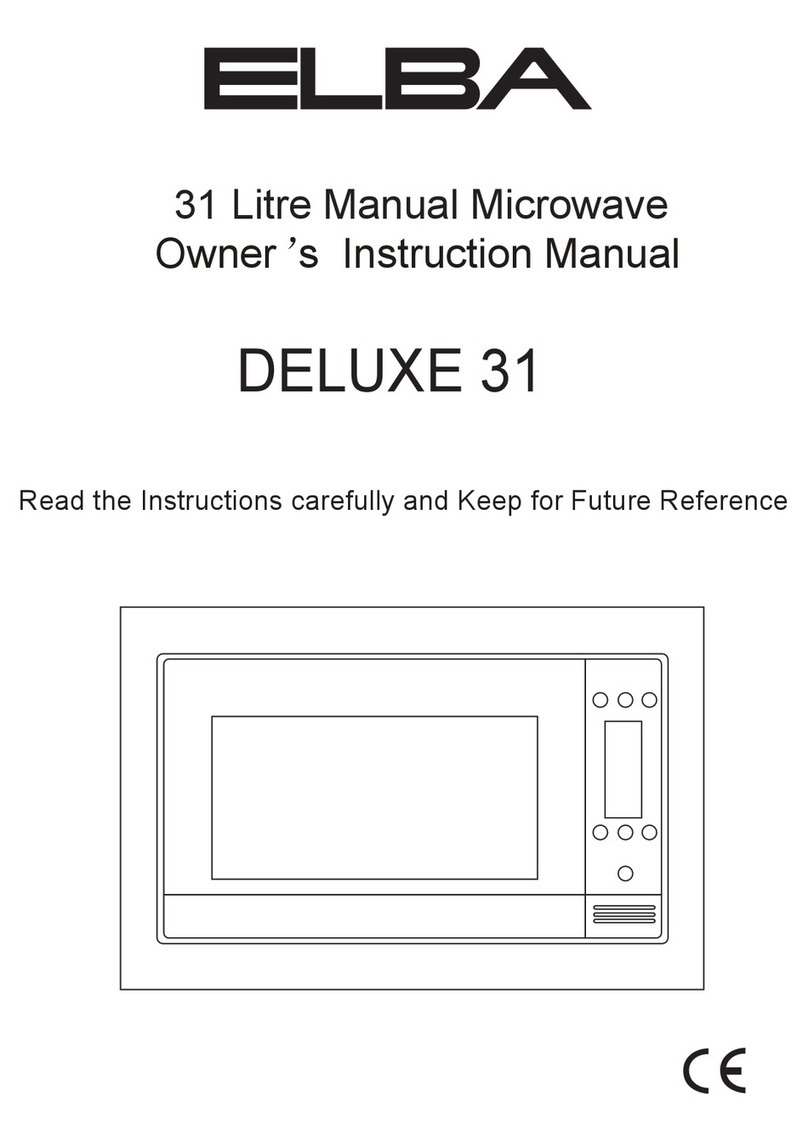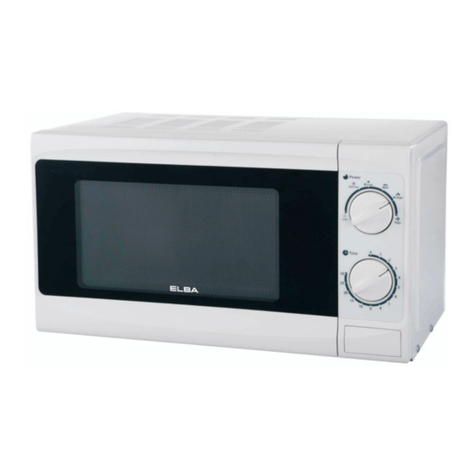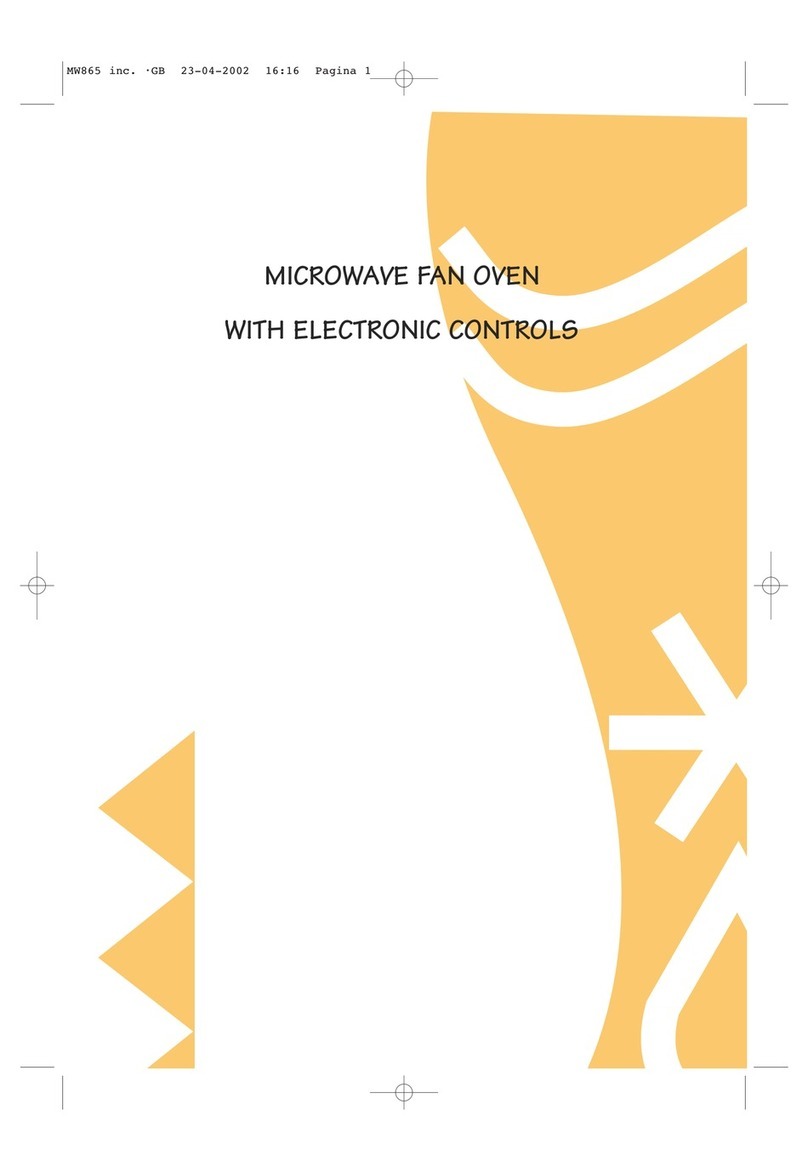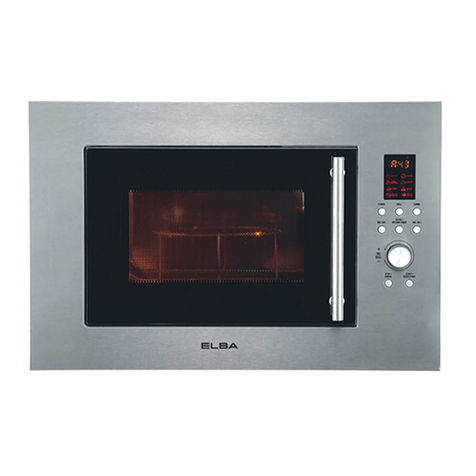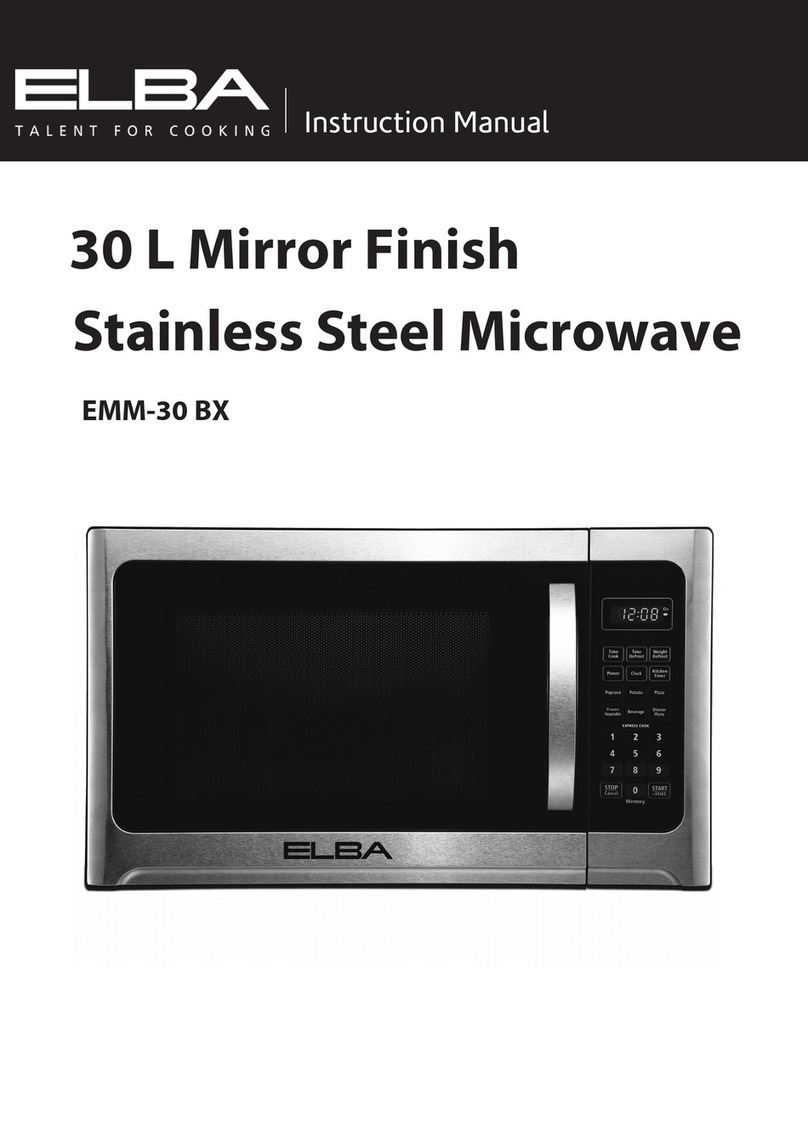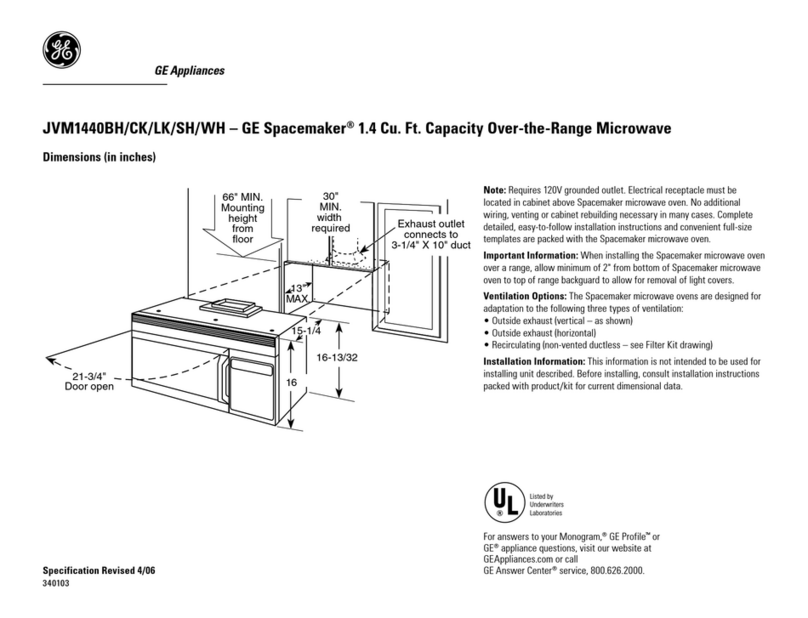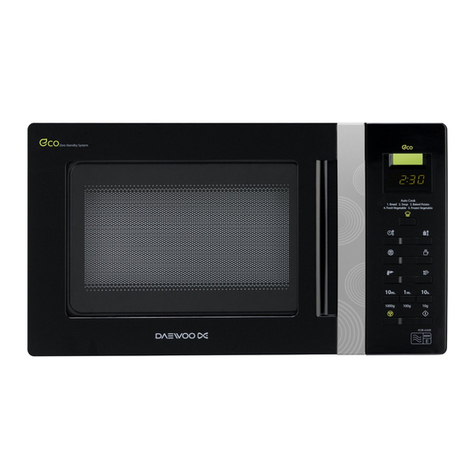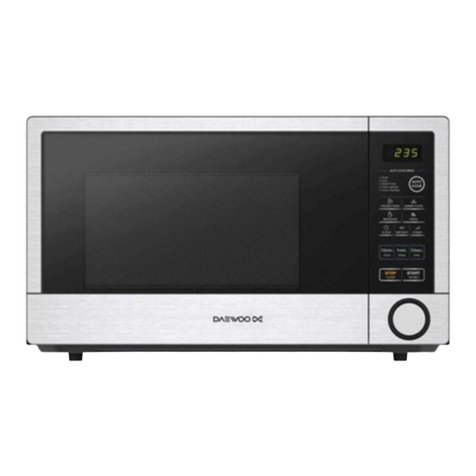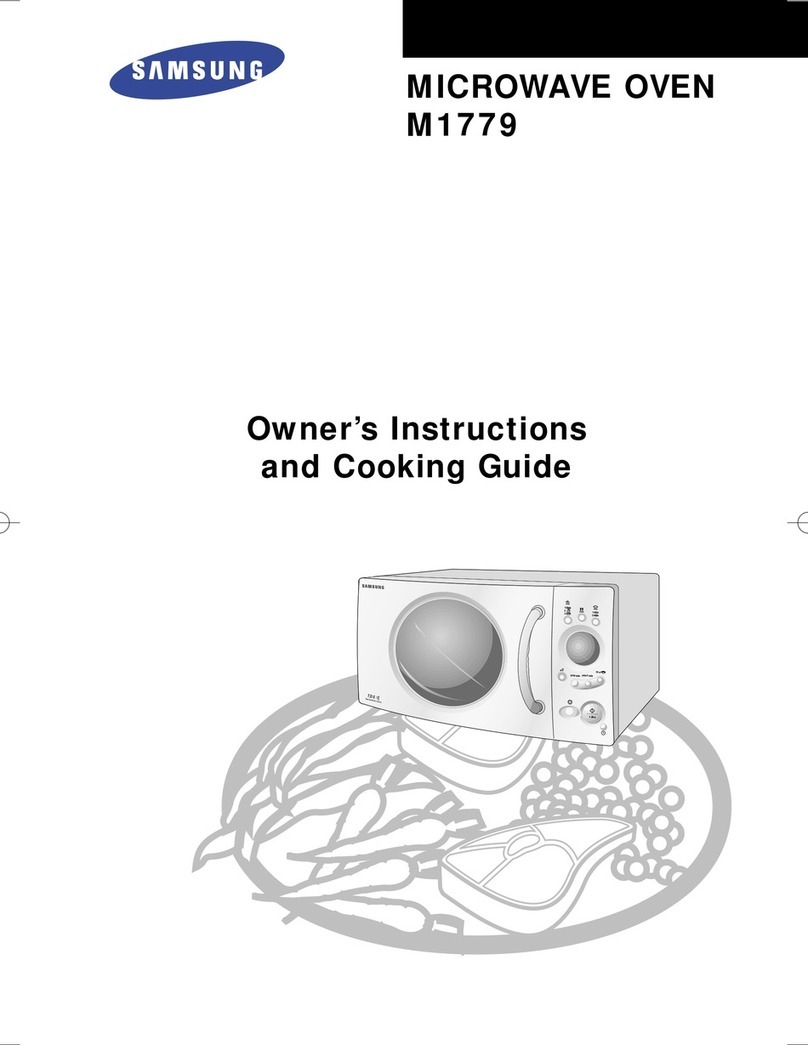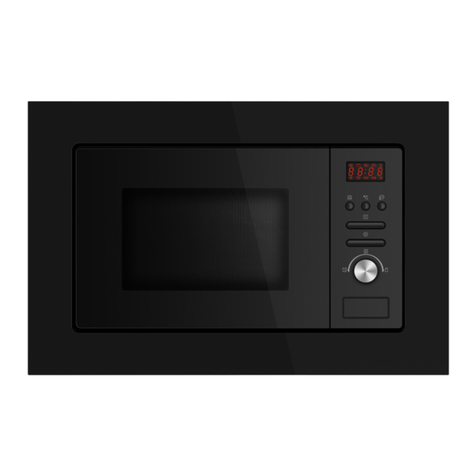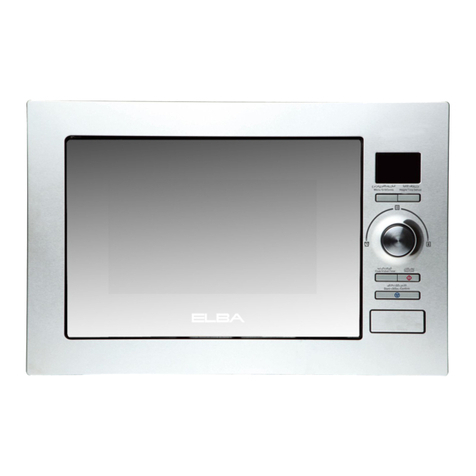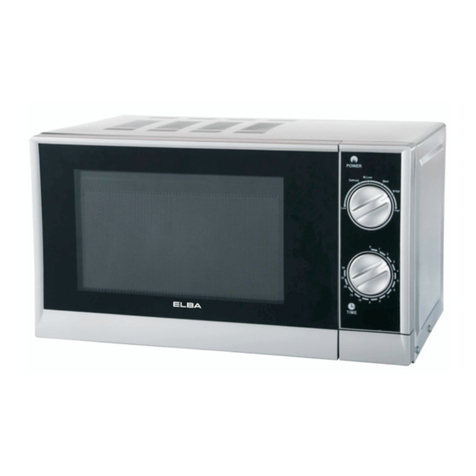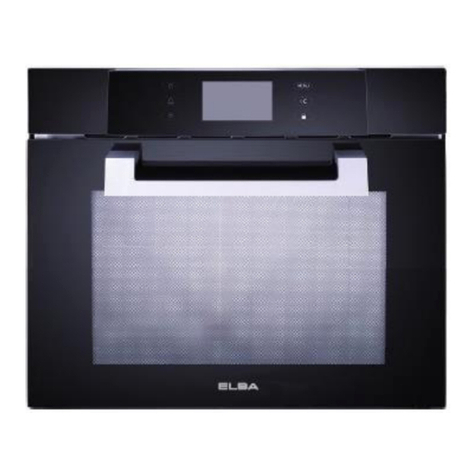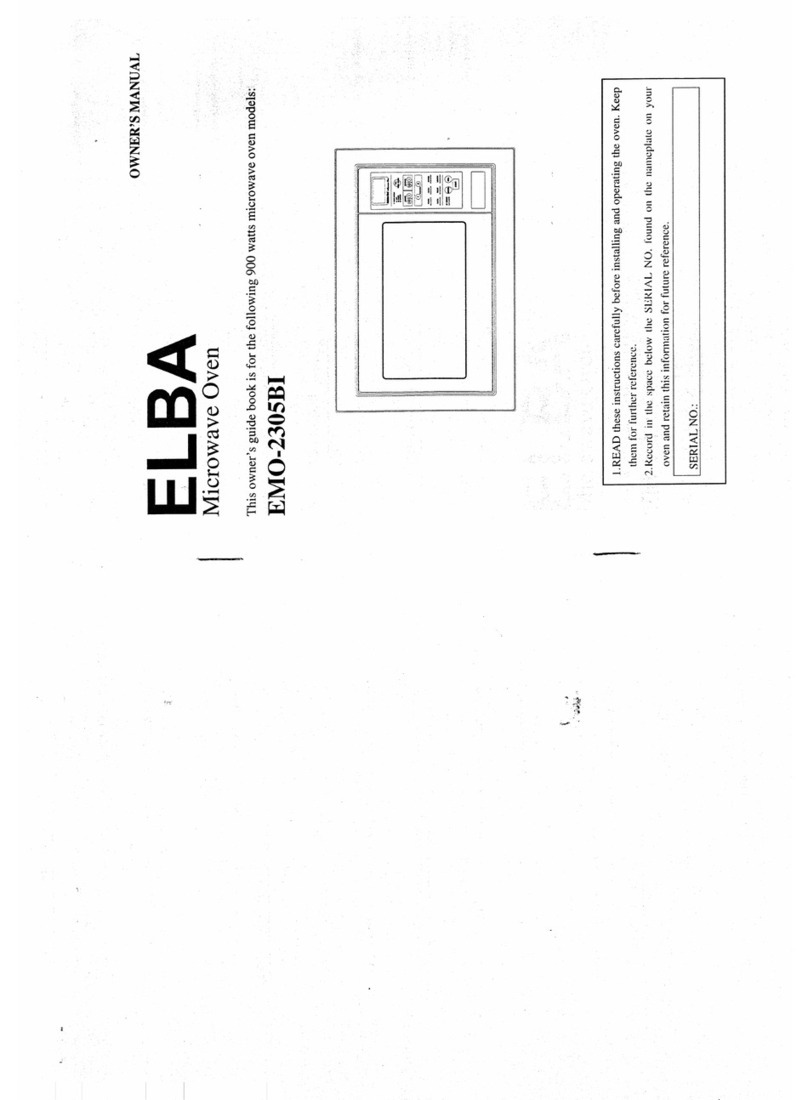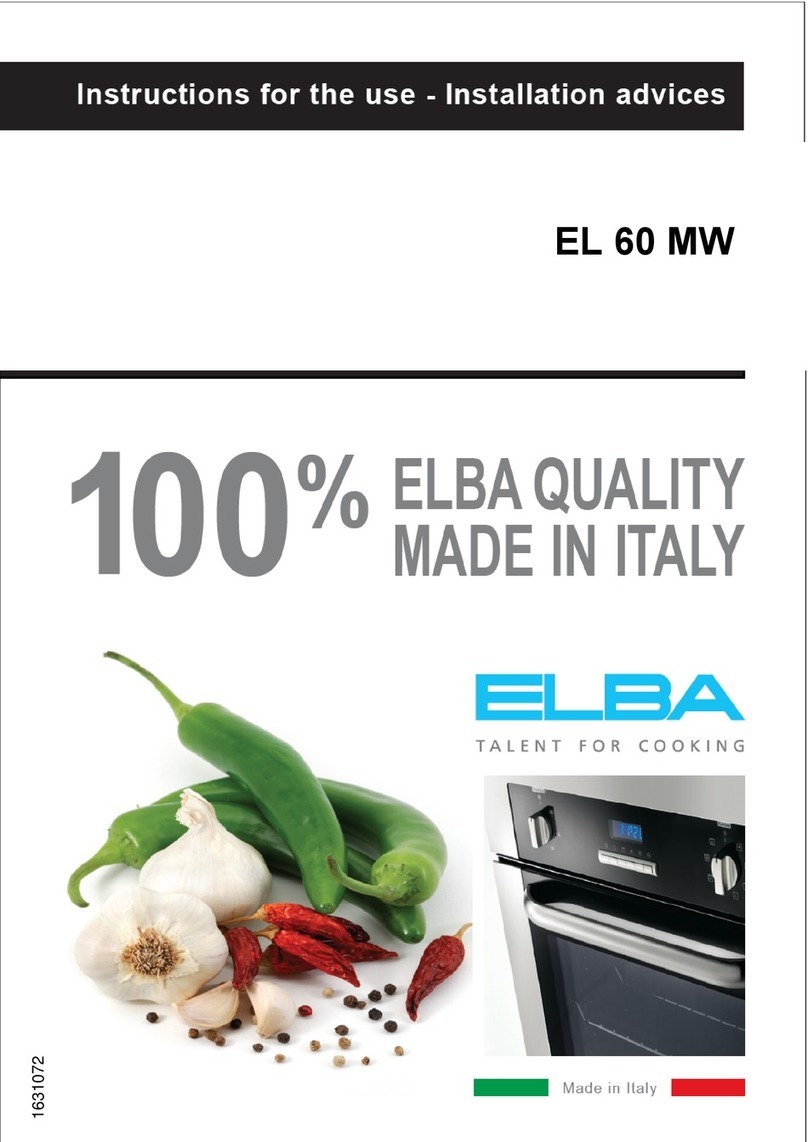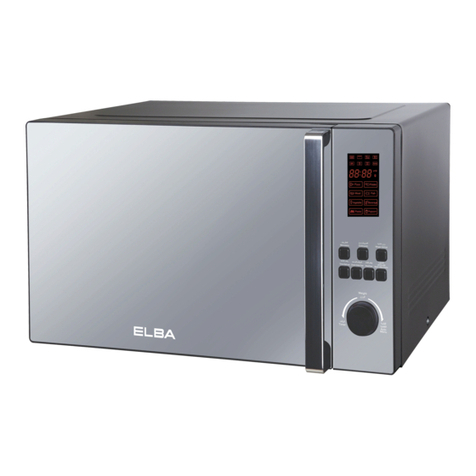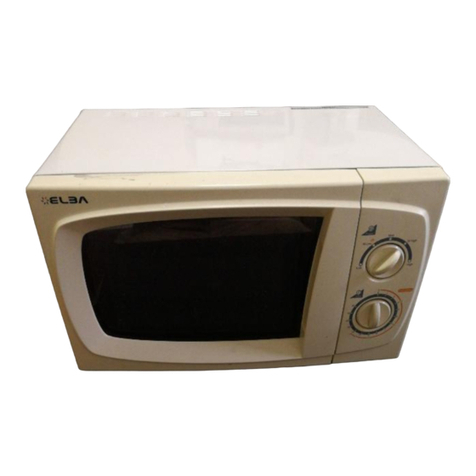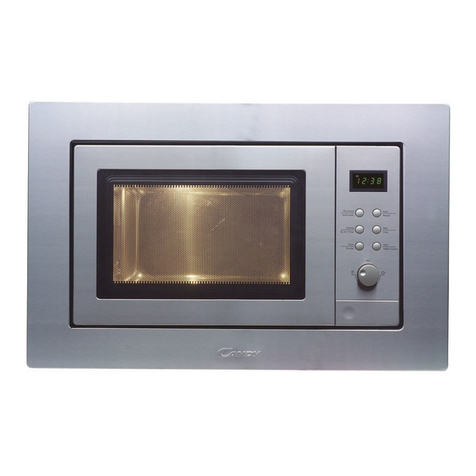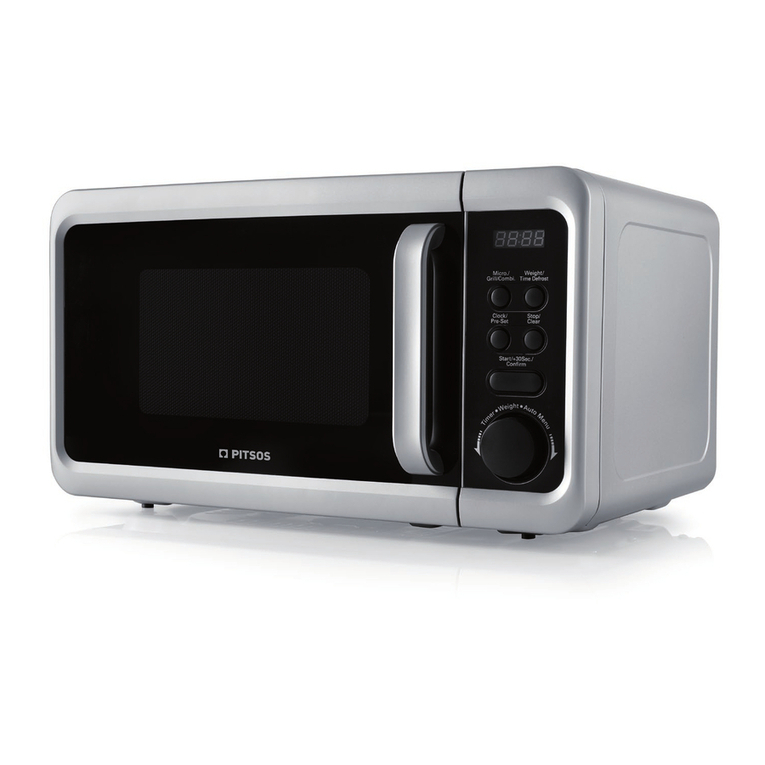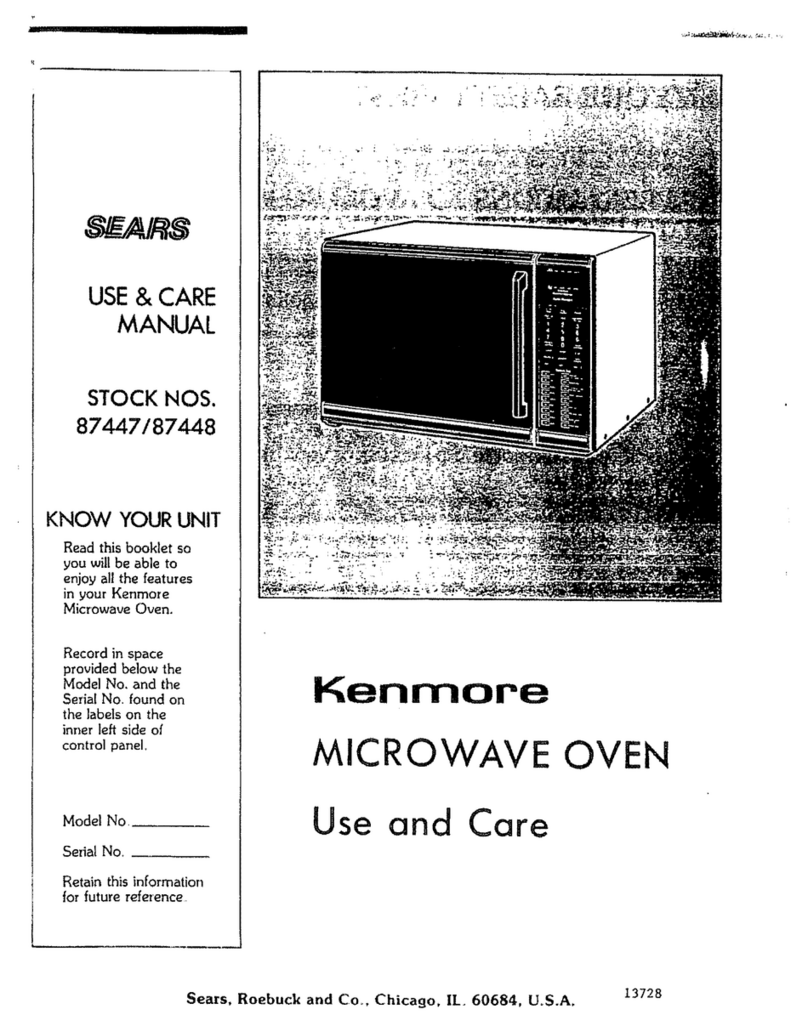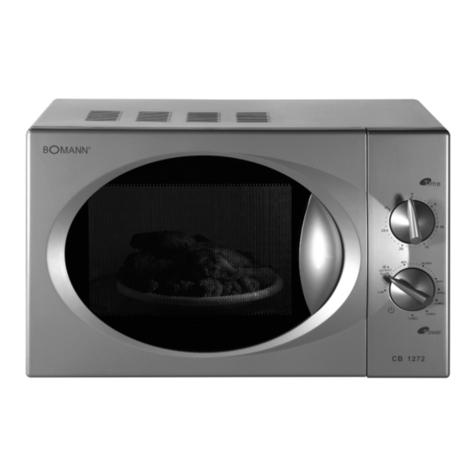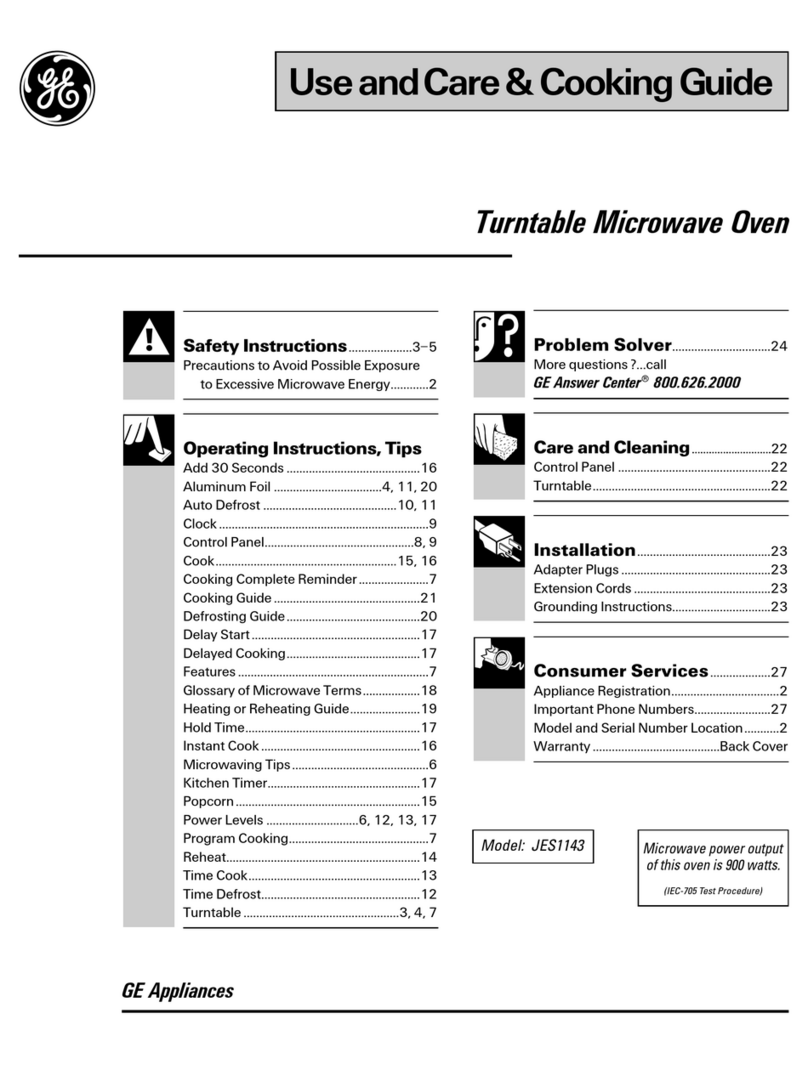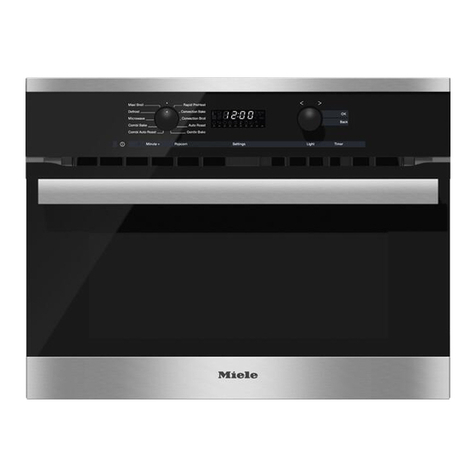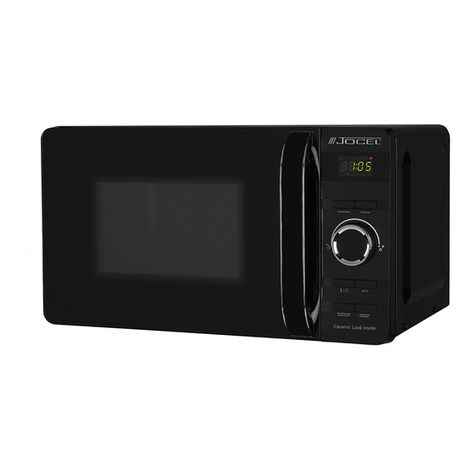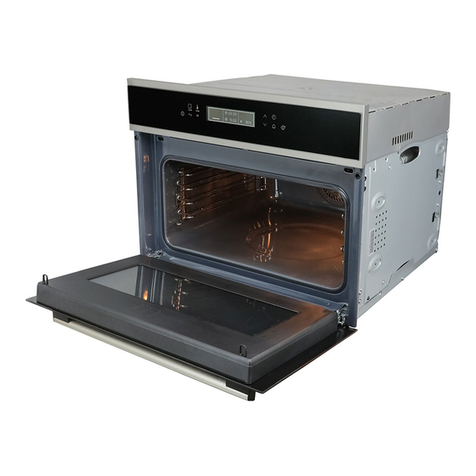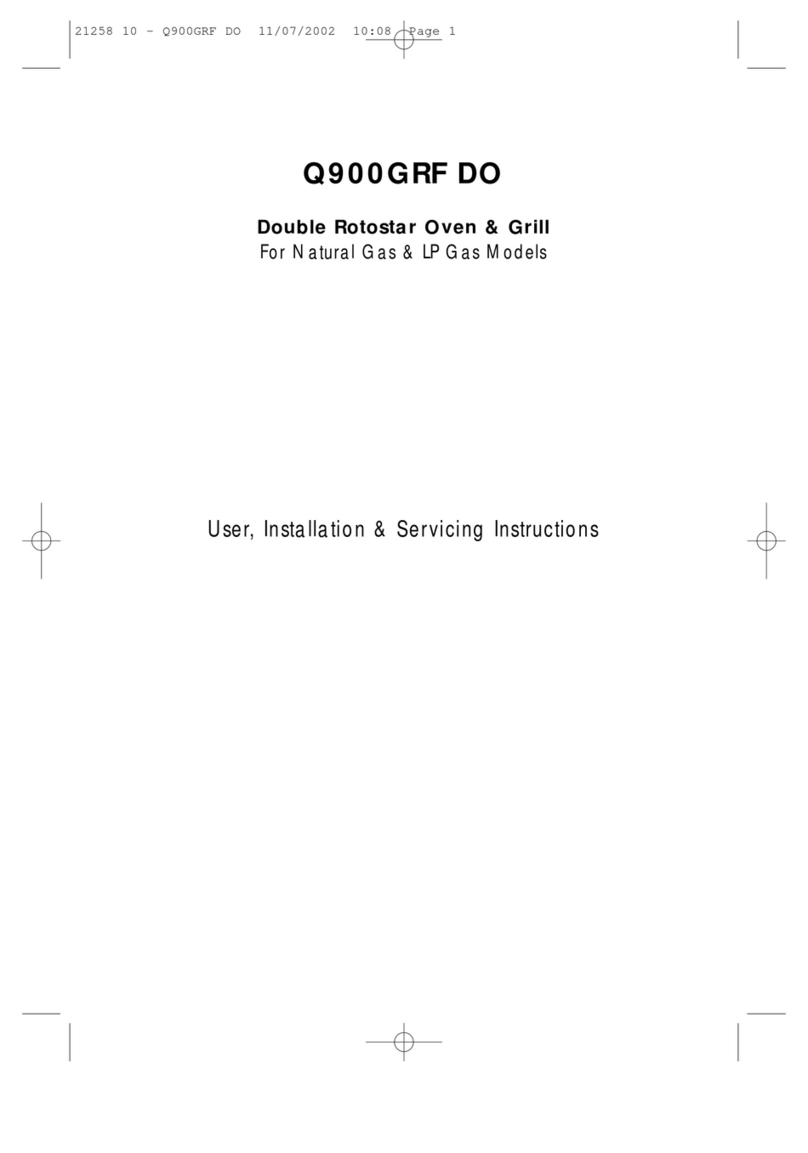
2
PRECAUTIONS TO AVOID POSSIBLE EXPOSURE TO EXCESSIVE MICROWAVE ENERGY
aF ilure to observe the following precautions can result in harmful expose to microwave energy.
1. Do not attempt to operate this oven with the door open since open-door operation can result in
harmful exposure to microwave energy. Do not attempt to tamper with, or make any adjustment or
repairs the door, control panel, safety interlocks or any other parts of the oven on your own, it must
be repaired or replaced by the authorized service agent or after-sales service centre or a similarly
qualified person in order to avoid hazards.
Warning:
It is hazardous for anyone other than a trained person to carry out any service or repair
operation which involves the removal of any cover which gives protection against exposure to
microwave energy.
2. Do not place any object between the oven front face and the door or allow soil or cleaner residue to
accumulate on sealing surfaces.
3. Do not operate the oven if it is damaged. It is particularly important that the door of the oven is
closed properly and there are no damages to the:
Door (dent)
Door hinges and latches (broken or loosened)
Door seals and sealing surfaces
IMPORTANT SAFEGUARDS
When using this appliance, basic precautions should always be followed, including the following:
1. Read all instructions before using the appliance.
2. Do not content the plug with wet hands.
3. Use this appliance only for its intended use as described in the manual. Do not use corrosive
chemicals or vapors in this appliance. This type of oven is specifically designed to heat, cook or dry
food. It is not designed for industrial or laboratory use.
4. Do not operate the oven when empty.
5. Do not operate this appliance if it has a damaged cord or plug, if it is not working properly, or if it has
been damaged or dropped. If the supply cord is damaged, it must be replaced by the authorized after
sale service centre or a similarly qualified person in order to avoid a hazard.
6. WARNING: Only allow children to use the oven with supervision when adequate instructions have
been given so that the child is able to use the oven in a safe way and understands the hazards of
improper use.
7. To reduce the risk of fire in the oven cavity:
When food is heated or cooked in disposable containers of plastic, paper or other combustible
materials, check the oven frequently to the possibility of ignition or deterioration of food container.
Remove wire twist-ties from paper or plastic bags before placing bag in oven
If smoke is observed, switch off or unplug the appliance and keep the door closed in order to stifle
any flames.
Do not use the cavity for storage purposes. Do not leave paper products, cooking utensils, or food
in the cavity when not in use.
8. WARNING: Liquid or other food must not be heated in sealed containers since they are liable to
explode.
9. When food is heated or cooked in disposable containers of plastic, paper or other combustible
materials, check the oven frequently to the possibility of ignition or deterioration of food container.
10. Microwave heating of beverage can result in delayed eruptive boiling, therefore care has to be taken
when handle the container.
11. Do not fry food in the oven. Hot oil can damage oven parts and utensils and even result in skin burns.
12. Eggs in their shell and whole hard-boiled eggs should not be heated in microwave ovens since they
may explode even after microwave heating has ended.
13. Pierce foods with heavy skins such as potatoes, whole squashes, apples and chestnuts before
cooking.
14. The contents of feeding bottles and baby jars should be stirred or shaken and the temperature
should be checked before serving in order to avoid burns.
15. Cooking utensils may become hot because of heat transferred from the heated food. Potholders may
be needed to handle the utensil.

